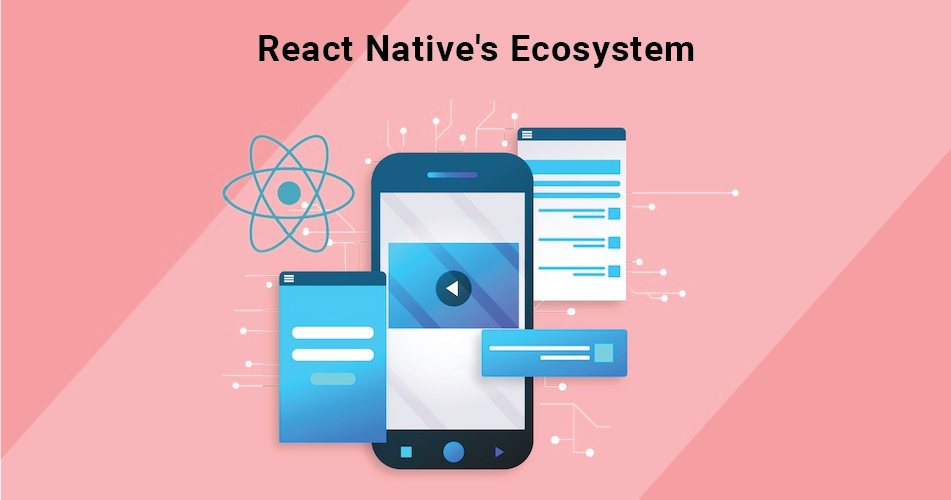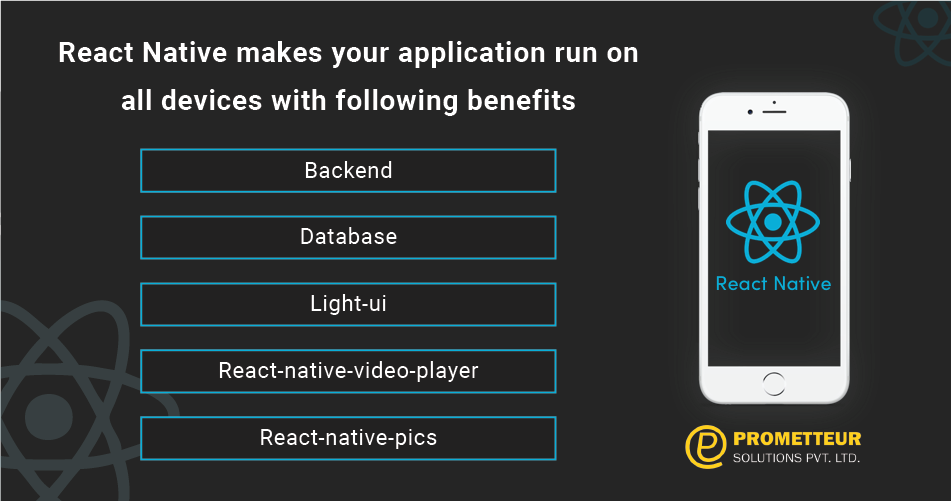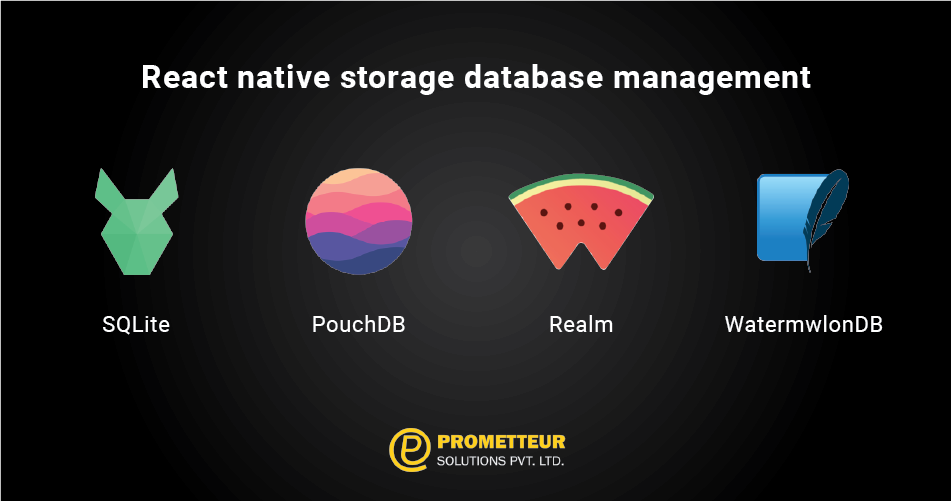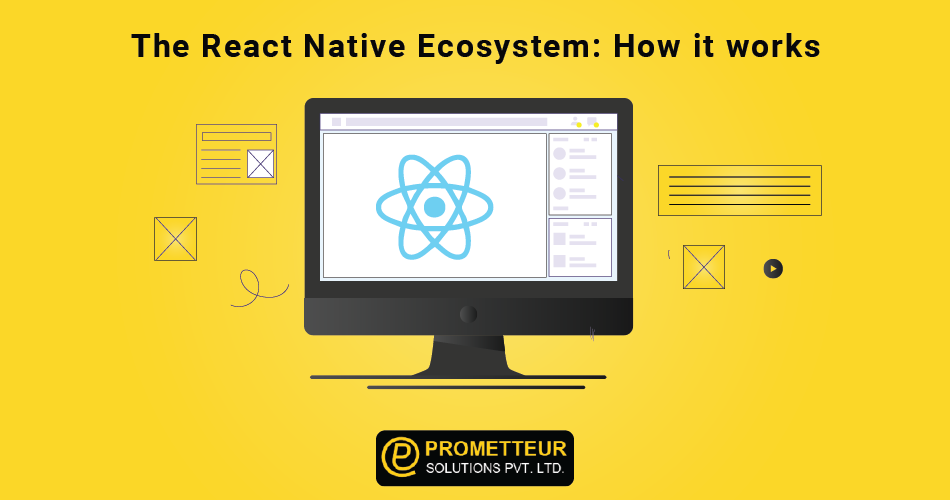If you’re a developer who’s new to React Native, you know it can be a difficult and intimidating journey. The number of frameworks, libraries, and languages is a little overwhelming. But don’t worry! You can take control of React Native with this complete guide. It’ll help you understand how the ecosystem works and what benefits it has for developers.
Let us look at everything you need to know about React Native’s ecosystem. This is to help in understanding how React Native works and what benefits it has for users.
THE TOP DATABASE OPTIONS FOR YOUR REACT NATIVE PROJECT
React Native Ecosystem
People are eager to learn JavaScript, but they’re put off by the fact that they have to learn a completely different language for a mobile device. React Native is a tool that makes it easy for people to learn JavaScript and makes it easier for them to run on a mobile device. It allows developers to write a single codebase and deploy it on multiple platforms without sacrificing performance.

React Native SDK/ SDKs and Build Tooling you should know the differences between each of these libraries to make your apps. You need to know what tools are available to help you in building your application at its core. React Native is a platform for developing user interfaces with a native look & feel.
WHAT IS THE DIFFERENCE – REACT NATIVE VS FLUTTER
The iPhone is popular among its users due to its small screen size and other aspects. However, as you might know, iPhone and iPad don’t run JavaScript VM for performance reasons. React Native makes your application run natively on iPhone, iPad and Android phone, and tablet devices.
Backend
Users can create a React Native back end in minutes with a custom server written in JSX (web language). That’s how the React Native components for their back end are written in JavaScript. It’s common for Backends to host their own GitHub repositories and provide webhooks.
Using GitHub, you can find a number of React Native back ends. So far, there are more than 5,000 Backends available for iOS/Android and web (including React Native, Backbone Native, Thrift Native, Akka Native, Koa Native, and more).
Developers use React Native Backend frameworks for backend rendering such as react-redux and redux-thrift, and d3-tag for manipulating data. For storage, Backends use react-redux, react-data-router, and redux-social to access external storage.
Database
You can use your existing database services from iOS, Android, or Web but now, you will be able to use it with React Native through an inbuilt Reagent client which will allow you to persist and query your database like a native mobile app. The reagent is an innovative library that helps you build responsive web apps using JavaScript. It is designed to make web development fast, agile, and easy.
React Native comes with Reagent, which is an intuitive library, designed to make building React Native apps fast, simple, and native-like. All your UI components are created in Reagent, which you can deploy as a static web application or as a react-native application. Static Web App & Native Application You can create a simple static website on react-native.
HOW REACT NATIVE CAN TRANSFORM YOUR NEXT STARTUP

Light-ui
It is the fastest UI framework for Android. light-UI provides responsive & good-looking UI. Light-UI has been tested across a wide range of devices. It is also stable and works well on a variety of device configurations like old Android and on all major mobile OS. light-UI has lots of tutorials, concepts, and projects. Also, React-native-UI will help you to understand React Native’s UI components and how you can use them in your application
React Native does not mean Node.js and are apps written in JS but are compiled to native OS. Moreover, React Native is based on the concept of Components, that’s why it is considered as part of the React UI library. React Native is an excellent choice when you want to easily create native apps for iOS or Android
React-native-video-player
React-native-video-player is a native video player for iOS and Android written in JavaScript. The video player also allows playing video on the website. The app has a built-in fallback for videos not available in the region.
React-native-gear-manager
react-native-gear-manager is a fitness app. The app offers a wide range of fitness and workout options with one tap. This app is great for users who are looking to stream live videos from workout equipment.
React-native-pics
React-native-pic is a cross-platform photo picker for iOS and Android devices. The app allows users to browse, edit, organize and share photos. The app has a JSON API that exposes methods, collections, and map keys. React Native automatically parses the JSON API to display the following actions in the form of interactive controls, with corresponding API calls.
WHY DEVELOPERS SHOULD USE REACT NATIVE
let us look at all the functionalities of the app which makes it really easy for developers to write an App, such as editing and saving photos
- Automatic Transfer of Data Between iOS and Android
- Users can choose from different photo modes
- Select from the photo’s gallery and open the photo.
- Pin the photo to the home screen for all devices and take a screenshot with all the other pictures.
- Settings
- Import your iCloud Photo Library.
React-native-bundler
react-native-bundler is a library that helps in compiling application components to native C++ code. This is used for native extensions. When the JavaScript engine detects the presence of native code, it will create a closure or a native entry point. When a native function is called, it is run on the native thread, which minimizes latency and ensures compatibility with the device.
Let us see how to install react-native-bundler
- Install via NPM
- NPM install –save react-native-bundler
- You can also check the source on GitHub
- Install using bower:
- Bower install –save react-native-bundler
React-native-view
This will help you to understand the React Native views and also provides interactive documentation in the form of an interactive guide. This will provide you with all details about all the tooling that you can use, and when you need it to build apps using React Native. You can get the components by yourself by just building it from scratch, or get the pack for building a lot of single components.
React-native-audio
If you want to add sounds to your Native iOS app, it’s not easy, yet not such a difficult task. However, you may need to wrestle with low sound programming, spend hours on research and learning, and spend money on tools that will only work in the near future. Native iOS apps should sound great and offer a unique and unforgettable experience to their users.
REACT JS VS REACT NATIVE– WHAT’S THE DIFFERENCE
With AudioKit, you can add sounds with 4 lines of code. AudioKit provides a number of high-performance audio units and effects that will make your native iOS app sound fantastic. It is a popular library for Native UI that makes it easy to use Audio components on your Native iOS app. AudioKit provides a number of high-performance audio units and effects that will make your apps sound great without the need to wrestle with low-level audio programming tasks.
AudioKit can be seen as an abstraction layer on top of hardware and system services, which allows you to focus more on the creative side of things and worry less about the technical details.
React Native Storage
Storing data is not a simple or straightforward process, especially when it comes to database management. There are so many types of databases, each with its own unique use cases, that sometimes it’s hard to determine which one is right for your project.
WHAT IS THE DIFFERENCE BETWEEN FLUTTER AND REACT NATIVE?

Yes, finding the right database solution can be an exhausting experience. It requires time and knowledge, and usually, you can’t tell whether or not you’ve found the one until after putting in some work.
Sometimes the database you chose doesn’t suit your needs, and other times it’s too complicated to handle. This library primarily helps in managing multiple usable databases and creating applications stored in one or different locations. In this section, we will go over the various types of storage options that are available to you as a React Native developer.
SQLite
It is an open-source, fast, full-featured, flexible, and scalable database system that runs on multiple operating systems? It is excellent for SQLite to store and manipulate data, create and use SQL queries and queries for advanced application uses. SQLite is open source and cross-platform. SQLite has support for many programming languages. SQLite is designed to be highly portable, well-suited for use on embedded systems and on modern operating systems. SQLite has a lightweight design and takes minimal space on a disk.
PouchDB
PouchDB allows developers to save data from their applications locally when they are offline, then synchronize that data with CouchDB once the application is back online. PouchDB keeps user data in sync in this fashion, regardless of whether the user is signed in or not.
PouchDB is backed by the Google tech community and provides a simple, web-centric API for organizing and managing data. It integrates easily into existing web development frameworks and doesn’t require a complete rewrite of them.
Realm
Realm is built with web technologies such as React Native and AngularJS. It is also made for large-scale data. Realm is a data storage alternative to CoreData, SQLite, and other key-value store solutions like AsyncStorage. The Realm library for React Native makes use of a proprietary database that can hold a massive amount of data, up to 10,000+ records.
TOP LIMITATIONS OF REACT NATIVE THAT YOU SHOULD KNOW
Realm server provides tools to create, read, update and delete databases. Thus, you can create a real-world database of your choice. Using our analytics, you can track the usage of APIs. For doing this you can simply tap the analytics icon in the app’s menu.
All of this is powered by a single SQLite engine. Realm’s proprietary database is built around Realm’s index-free ACID-compliant data model with query language based on SQL.
WatermelonDB
WatermelonDB was created by the makers of PostgreSQL to solve the problem of data storage. WatermelonDB offers us a RESTful Data Solution that can be embedded into an App for automatic update. WatermelonDB is a robust and scalable solution for your Android app. It provides seamless integration into the Android Runtime, making your app’s backend both robust and fast. That’s why we at WatermelonDB are offering you an exclusive 15% off on any of our products to help you build at scale.
HOW TO IMPROVE REACT NATIVE PERFORMANCE
This provides the best solution for High Availability and data replication to help build a Software Development Life Cycle that scales. WatermelonDB creates a seamless integration into the Android Runtime (ART) making your app’s backend both robust and fast.
React Native iCloudStore
React Native is a JavaScript-based open-source mobile app development framework that allows developers to build cross-platform mobile apps using JavaScript instead of relying on platform-specific languages (e.g. Swift, Objective C, Java).
React Native is the native version of React. It was developed by Facebook and Instagram engineers to allow both companies to use the same programming language for both their web and mobile applications. The iCloudStore feature in React Native is very handy for developers who want to create an app that can store data without having to rely on third-party services like Firebase. This library provides an easy way to create a development server with just a single file for fast testing, non-local storage, and to serve up required files for various objects.
